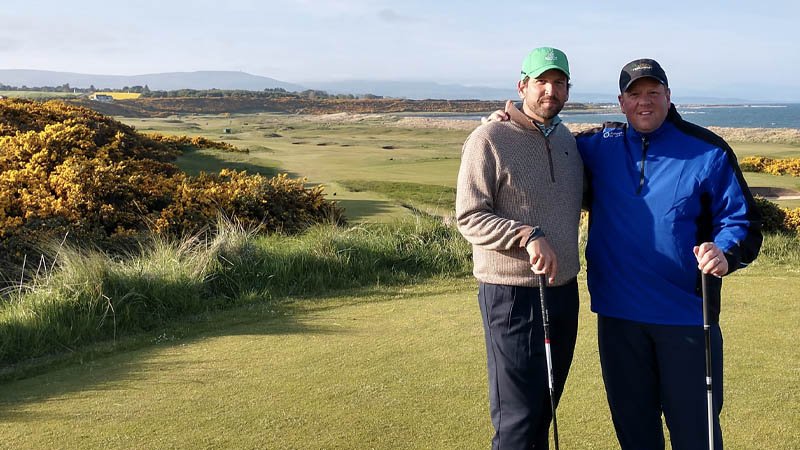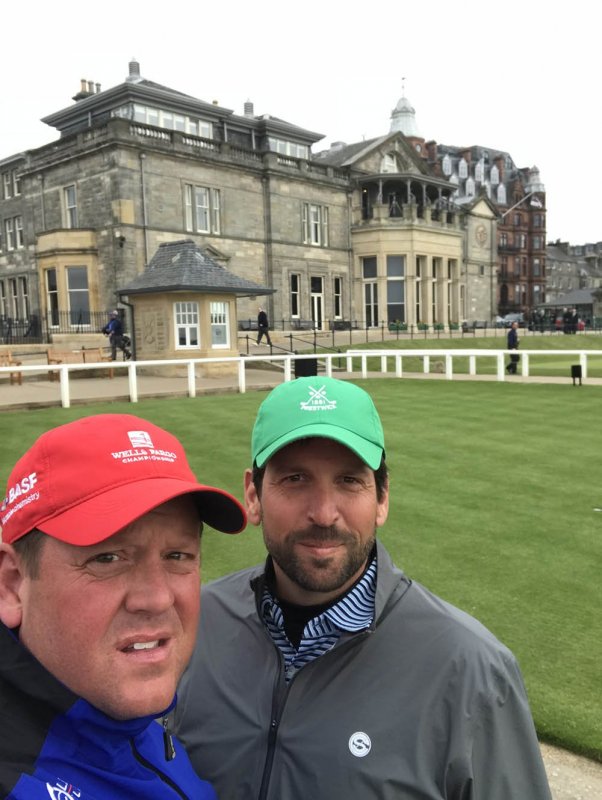
Spend just a few minutes talking with Sam and Andrew Green, and it's not readily apparent that they are related, much less brothers. Sam has a slow drawl that gives away his residence of Wilmington, North Carolina. Accentless Andrew, a resident of Bel Air, Maryland, sounds like he could be from Anytown, U.S.A.
Sons of a Roanoke, Virginia-area dairy farmer and graduates of Virginia Tech, the Green brothers do share a love for the game of golf, and although they approach the industry from different sides, they also have in common a drive to make the game better for those who play it and more inviting for those who yet do not.
 Andrew, 43, is a renowned golf course architect who prepped with McDonald and Sons, and whose resume as principal of Green Golf and Turf includes work at such historic layouts as Oak Hill, Congressional, Scioto and Inverness.
Andrew, 43, is a renowned golf course architect who prepped with McDonald and Sons, and whose resume as principal of Green Golf and Turf includes work at such historic layouts as Oak Hill, Congressional, Scioto and Inverness.
A former superintendent, Sam, 49, is a partner in Aqua Aid Solutions, which provides a variety of solutions and products to help superintendents improve soil and plant health.
"We both have a passion for the dirt and the earth," Andrew said. "I didn't have 1,000 acres to farm. I found golf as an opportunity to connect to the earth."
His passion is creating unique golf experiences for scratch players and novices alike.
"There are a lot of places for golfers to spend their money," Andrew said. "I want to offer them a one-of-a-kind golf experience. That is the value in connecting with your history and uniqueness, so people can be connected and feel like they are part of something that is not mass produced."
Older brother Sam originally had plans to become a pediatrician when he enrolled at West Virginia University. When he realized a career as a doctor was not in the cards, he enrolled at Virginia Tech with an eye on a career as a professional turf manager.
He worked managing the athletic fields at Tech and later prepped in Hilton Head at Harbor Town under Joe Vuknic, who recommended a turn working for one of the biggest names in the business.
"Joe told me that if I was going to go anywhere in this business, I would have to work for Paul Latshaw," Sam said. "I went to work on his crew in 1994 at Congressional, and I became his assistant in 1995 when John Zimmers left. I stayed on as his assistant through the 1997 U.S. Open."
While Andrew's work has drawn widespread acclaim throughout the industry, his older brother remains one of his biggest fans.
"During his time with Chip McDonald, he learned everything there is to do on a golf course," Sam said. "He can get on a bulldozer, a Sand Pro or hold a shovel. You name it, he's done it.
"He's learned to shape from the ground up. He's worked his ass off. To graduate with two degrees to the success he's had, if it has anything to do with building a golf course, he's done it. The vision he has in his mind, it's unlike anything I've ever seen. And I'm not saying that as his brother, but as someone with 30 years in this industry."
Whether it is designing or redesigning golf courses, or providing plant and soil health solutions for superintendents, the Greens are common in their desire to help provide a memorable golf experience for scratch and novice players alike.
Andrew draws on technology to help recapture pieces of the past in restoring some of the country's greatest layouts.
"Architecture combines my love for golf and the ability to create things in the dirt with the technology piece," he said. "I love the way technology allows us to do work we've never done before - surveying greens, laser technology, drones, computers and balancing that; it's one reason I love what I'm doing."
There are a lot of places for golfers to spend their money. I want to offer them a one-of-a-kind golf experience. That is the value in connecting with your history and uniqueness, so people can be connected and feel like they are part of something that is not mass produced.
Currently restoring Scioto Country Club in Columbus, Ohio, Green achieved creating that uniqueness two hours away in Toledo, where his restoration of Inverness Club has drawn rave reviews and was named by Golfweek as the top renovation of 2018. The Donald Ross classic was the site of the U.S. Junior Amateur in 2019 and next year will be the site of the Solheim Cup.
"When working on old courses, I surround myself with digital images, articles, club history, aerials and drawings," he said. "Inverness is one of the most enjoyable projects I've worked on - finding the best solution for the modern game while keeping Donald Ross's intent. There were so many tools available to get that information. Technology allows us to get the information we need while also protecting history and making places better."
Those who play Inverness would agree.
"We put a long-term plan in place. We wanted to return Inverness to the Donald Ross golf course that it was intended to be," said Inverness green committee chairman Matt Douglas. "We stayed steadfast in that mission, and we made the membership aware of that, and they embraced that. I can tell you that our membership is absolutely blown away by the strides we have made."
Sam believes his role with Aqua Aid and his drive to help provide superintendents with some of the tools they need to be successful and Andrew's vision for creating unique layouts that appreciate the game's past while embracing its future are inexorably linked in helping grow the game.
"There is so much pressure on turf managers around the world on a daily basis," Sam said. "There are so many data points: moisture levels, tissue testing, sunlight data. You better be able to deliver a piece of research, or you're going to get passed by. Turf managers are getting younger, and they are data driven.
"If Andrew can build it and get it dialed in, then the person managing it can get it dialed in for their members."


